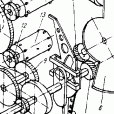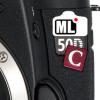Leaderboard
Popular Content
Showing content with the highest reputation on 09/18/2015 in all areas
-

V-log unlocked for free!
kaylee and 2 others reacted to Zak Forsman for a topic
I saw your posts over on PV. I tried my hand at it with the demo but couldn't figure out the best way to identify and adjust things. so I went out instead and shot some more V-Log with a Dog Schidt Optiks FF58 lens I rented this morning.3 points -
Canon clearly mentioned that 4k is not coming any time soon due to "Cost" issues. MM: Well, historically, I think that Canon was the first in the world to come out with a 4K product. In 2011, we had the Canon EOS 1D C, and then we had the Canon Cinema EOS C500 for professional use. For the consumer models, I think that we still need to work a little bit more on the balance between the cost and the sensor sensitivity before we can come out in the market. As you may know, Canon's main point of difficulty is to reduce costs. [Ed. note: This is interesting, in that Canon views cost competitiveness as their main point of challenge in the market. It's also interesting in that it sounds like we won't see much in the way of 4K video in their SLR lineup for a little while yet.]3 points
-

Dog Schidt Optiks FF58 + GH4 + V-Log
sudopera and one other reacted to Zak Forsman for a topic
Rented a DSO FF58 today because I'm thinking of buying at least one. More if i can afford it. This one is pretty close to the specs I'd choose. 2x oval aperture, ultra-low contrast. It really makes shooting fun. Shot this off the roof at the office today. Don't have a step up ring so I handheld a Hoya ProND 200 in front of it. This is also shot in V-Log, captured externally in 10 bit. But I still see the magenta/cyan macro blocking issue. I think I'm done with V-Log. Probably going back to the Natural profile. ISO 400, v709 LUT + Impulz Kodak 50 (FPE) + some curve adjustments + Grain from FilmConvert2 points -

Ursa mini 4k footage
Axel and one other reacted to Volker Schmidt for a topic
It also simply looks like - good color science of the manufacturer. (low, low english:) Here 1 year old beta-footage of the Ursa: I love what I see, from this Cameras.2 points -
Guess the camera
arellaTV and one other reacted to Mattias Burling for a topic
Sorry, no dog for you njet no lx100. But it is as easy to carry arround. No ML Raw, but still BINGO! Both is my LG Flex 2 Smartphone :-)2 points -
V-log unlocked for free!
Santiago de la Rosa and one other reacted to Astro for a topic
Yep I've done countless tests with the VLog, and most of the conclusions of Aaron Chicago and others are pretty much spot on. What I found was if you shoot in very good light, either outside or inside with decent video lights and overexpose with zebras set at 65 and 80 approx, then the noise especially and also the magenta blocking wont be a problem really and it does produce some wonderful images, best I've seen from the GH4 in many cases, but its definitely a double edged sword. As its been said by others if you shoot where there are a lot of midtones and softer shadows in mid light, you will see the magenta blocking all over the place, grey or light brown walls with shadows on them are an absolute delight (being sarcastic here) magenta blocking on them pretty much everywhere. Plus some are saying its the varicam LUT that is the problem, this is only partly true at best, you can see this problem in the original VLog file, I have done a ton of A/B's and its there in the original untreated 8 bit file as well, but its less noticeable, now other LUTS may bring it out less, thats probably true, but they wont get rid of it cause its there in the original 8 bit file....end of story, and anyone that does some serious tests will see this immediately. Now 10 bit with other LUTS may be enough improvement to overcome or mask the problem enough...I dont know. But to me it appears that LPowells analysis based on Barry Greens statements are spot on, its not what everyone likes to hear, but I feel LPowells conclusions were exactly right, and it appears that even after 6 months of testing Panansonic have released a very flawed version of VLog, and paying customers (I havent bought mine yet) are entitled to feel very pissed off, they should not have used the varicam mapped version with the 79 IRE high end rolloff, they should have mapped a GH4 version from scratch. God knows they had enough time to do it (...and Yes I know what software writing involves, I develop 3d worlds and call up scripts from scratch...I know how complex it can get) But whats even more amazing is not a single Beta tester appears to have mentioned this publicly, its totally unbelievable, some of the people that have tested this Log profile know a lot, have a lot of experience under their belt, and the very fact they did not notice or point this out on forums beggars belief. As far as filming goes I am a lowly hobbiest...but with a solid background in 3d design and also professional mural art and I saw it almost immediately...if I was a tester I would have been hounding Panasonic, its an 8 bit dogs turd in a lot of situations, fix it or dont release it!!! whats going on? Panasonic have really blundered badly on this and its not going to do them any good, face it...its a half developed product that they had tons of time to get right, and either the beta testers did not do their job...or Panasonic totally ignored them. Some already have the release version and they say its exactly the same and gives the same result, so probably best to not expect any miracles there. Some have even said the unreleased image app blundered version is not the real version, its an earlier beta, that also beggars belief, the release is just a code, its written in 2.3 and its highly unlikely that they buried earlier beta versions in 2.3 that somehow the image app tapped into. This is an amazing exercise in how not to do something by Panasonic, its not going to help them in the face off aggressive competition from other manufacturers and to be honest...at the very least it will cast some doubt over the observational powers of many of the beta testers as well. At the end of the day we have a one part cinematic looking image from VLog that has a lot of potential when shot in the right light, with perfect exposure etc...and the other part dogs turd with magenta vomit everywhere...choose your poison wisely LOL!!! Talk about truth being stranger than fiction...jeez!!2 points -
Panasonic GH4 vs Sony A7R II in low light - Speed Booster Shootout
TheRenaissanceMan and one other reacted to Brian Caldwell for a topic
In this example, the quality of the Speed Booster is really degraded by the Canon 85/1.2, which isn't a very good lens. Try putting a 55mm Zeiss Otus on a m43 Speed Booster Ultra if you want to see the state of the art in large aperture lens sharpness.2 points -

Canon to release a mirorless camera very soon
Mattias Burling and one other reacted to TheRenaissanceMan for a topic
If they can release a mirrorless camera with XC10/C100-level image quality in 1080p without Sony's RS and overheating issues, I'd be a happy camper.2 points -
2 points
-

When is "Good Enough" Enough? The rise of mirrorless and the jump to 4K.
Jimbo reacted to Lintelfilm for a topic
I'm on the mailing list of a site called Desktop Documentaries and recently received an email recommending a documentary kit for $1000. Uh oh! It included a Canon T5i and an H4n as THE basics for a cheap large sensor video camera package. So with as much tact as I could muster, I replied and informed the site owner I didn't think it was very fair to be recommending this particular set of items in 2015 to people who don't know any better (the site is mainly aimed at filmmaking begginers). I expected to receive either a dismissive reply or at best be ignored. What actually happened was I got a reply from Faith (the site owner) offering to pay me to write a better-informed article! So I did. Here's my article, in which I discuss the evolution of hybrid cameras (from the 5D MkII to the latest 4K models) and recommend my own gear package for $1000 (including all the very basics you'd need to shoot a documentary): http://www.desktop-documentaries.com/cinematic-documentary-gear-package.html I'd love to hear what you guys think of the list I put together (and my article in general!) and what you might have done differently ... PS: You can also see a few films I shot a while back with the camera in question here: http://lintelfilm.uk/blog/affordable-cinematic-video1 point -

V-Log L captured in 8 bit vs 10 bit
Don Kotlos reacted to Zak Forsman for a topic
Here is V-Log L at 8 bit, captured internally. And here it is at 10 bit, captured externally. These are 1:1 extractions from the 4k frame. Wrote more on the subject here... http://zakforsman.com/a-dynamic-range-and-tonality-comparison-of-v-log-l-on-the-gh4/1 point -
Help with "masks"
Santiago de la Rosa reacted to Snowfun for a topic
Hi, I'm new to all this so apologies if this is a trivial question! I'm looking to create a shot with time-lapse sky/clouds against a normal speed foreground. I can achieve a reasonably horizontal and "simple" horizon - but it isn't a "straight line". The "foreground" (normal speed) shots would be tripod based. There are then two alternatives: 1. foreground action taking place under the horizon (i.e. not impinging on the sky or time-lapse space) 2. foreground action takes place above the horizon. I assume that I need a mask to achieve this? But my question is what is the best tool for this? I use FCX as an editor but have failed dismally to get to grips with Motion. Any advice much appreciated. Tim1 point -
NX1 and improving it's lowlight capabilities
BrorSvensson reacted to Mattias Burling for a topic
Even if tvey implemented a noise free 3200, thats still just another stop. Unless youre already at f1.4, get a stop in aperture. Off topic, Am I the only one wanting lower iso. Would love a clean iso 50 or 25 in log.1 point -
1 point
-

Ursa mini 4k footage
Axel reacted to Don Kotlos for a topic
Footage looks great and both Ursa minis sound as very promising cameras that will establish BM. But I am sure it takes more than the camera to come up with a footage like that. I wonder if you could deliver something like that with a A7s and how much more effort it would take. Here is some further info from the people that shot the two wedding clips: http://nofilmschool.com/2015/09/everything-you-wanted-know-about-working-blackmagic-ursa-mini1 point -
3 axis gimbals are dead, this is insanity
Ian Edward Weir reacted to wolf33d for a topic
Well. Watch this video and tell me if you can believe it... https://www.kickstarter.com/projects/1091165875/steadxp-the-future-of-video-stabilization?ref=discovery The concept is fantastic. The quality is fantastic. Obiously it needs 4K to work well and shoot a bit wide, but man look at the result !!!!! Wow.1 point -

SteadXP available on Kickstarter
Julian reacted to Zak Forsman for a topic
no, i mean the restrictions, like having to shoot at a high shutter rate for it to be effective. and I can fix rolling shutter in after effects when i need too.1 point -
Ursa mini 4k footage
Santiago de la Rosa reacted to Axel for a topic
You are right. I wrote 'tasteful teal/cyan' (it should have read orange/teal of course) because it isn't Transformers. I think most of the enthusiastic reactions to the clip come from the two things a subtle o/t grading does: 1. the image looks balanced, harmonic. 2. the image looks clear because it's the highest hue contrast combined with luma contrast possible without looking outright wrong. But even if a lut can do wonders, my own experience with ProRes of the Pocket tells me that you always need to apply corrections, if only for gamma. Our Mr Wedding may be a laughing stock and make embarrassingly cheesy videos, but he must be brashly clever, if he did nothing but produced such nice images. So maybe everybody else makes too big a fuss about grading, log, finding the right profiles, ask for the right workflows. All you need is the right lut ...1 point -
Sony A7S II is out!
Don Kotlos reacted to The Chris for a topic
I think the video out of the A7RII is more than decent. And from comparisons I've seen, it holds up well against A7s at comparable ISO's when the RII is in S35 mode, in FF you're good to 3200. The PADF is very functional when shooting video as well. I don't shoot slog though, the minimum ISO for me is a pain to work with since I'm constantly shooting in bright conditions. YMMV. They're both capable of producing some amazing images. Cheers1 point -
1 point
-

Guess the camera
Mattias Burling reacted to Volker Schmidt for a topic
Aaah... I really thought that! but I did not dare to make me a laughingstock!:) Ok, nice quality:)1 point -
You can upgrade to 2.4 without worries1 point
-

Sony A7S II is out!
maxmizer reacted to TheRenaissanceMan for a topic
Low light performance is the main thing that's making me insecure with my current gear, but if I'm being honest with myself, I really don't need it. Most of my work is lit, and what I can't light I can fake my way through with fast lenses and an eye for natural light at the location. Even if I had the A7S II, I'd probably shoot it Brandon Li style and get my look in-camera. LOG profiles can be nice for big projects, but for novice colorists like me it's just too difficult to handle.1 point -

Sony A7S II is out!
TheRenaissanceMan reacted to Don Kotlos for a topic
I have fallen into the pit of market-driven pleasure-less indecisiveness. Low light is something I have always craved for. If it lacks overheating then that's another point although that's more due to insecurity. S-gamut3.cine is the last one cause s-gamut in A7s/a7sii is nearly unusable with my deficient coloring skills. Yeah I think it is a great camera and the one that I was dreaming of for years. Expensive as hell though so the only way that I could convince my wife to get it was if I sell boththe D800 & the E-M1. The A7sii will not allow me to sell the D800 yet so that's the main reason against it. I haven't recorded long clips yet. I might do that soon, but I am afraid that after the first overheat I will get nervous and go for the A7sII.1 point -
1 point
-
1 point
-
Thanx a lot TheRenaissanceMan! My settings on G6 is -5,-5,-2,-2. The picture is really very flat. I do not use any LUTs or Magic Bullets looks etc. in Sony Vegas, all is graded shot by shot manually. Firstly I decrase colors by "black and white" function then use Color Corector + saturation+gain+gamma+offset, after I play with RGB color curves. I also use the film grain background to make the picture more "organic". The lenses I mostly use are Panasonic 25mm F1,4 then Panasonic 14mm F 2,5, for longer shots Canon FD 85mm F1,8 and also Practicar Pentacon 135mm F 2,8. It is very important to use correct ND, I use only fixed ND 8 and 4 and 12. As G6 and also my lenses are not stabilised it is somertimes hard to make proper shots when climbing the Tepuy or when wading through the swamp in the jungle1 point
-
Which scene were you looking for? I love this movie.1 point
-

Panasonic GH4 vs Sony A7R II in low light - Speed Booster Shootout
ilariobiraghi reacted to TheRenaissanceMan for a topic
The Speedbooster combo, again, will give you more light and therefore less noise. It does, however, cost way more, have much lower image quality (until stopped down to as the same or smaller aperture than the Nocticron), and is much, much heavier. Another factor to consider: The Speed Booster combo will have a stop more light/less noise than the Nocticron, but because the Nocti is so much sharper wide open, you could use noise reduction in something like Neat Video and still end up with crisper results.1 point -
a7RII is a much better deal... :-) You can always use 4:2:2 8-bit going externally in both anyway... ;-) LOL OK, apart my jokes, I think you're safer with the most interesting hybrid offer from Sony...1 point
-

Sony A7S II is out!
Don Kotlos reacted to TheRenaissanceMan for a topic
If it's been working the way you want, why bother? Make cool stuff with it.1 point -
@Blake.H Hey, I wanted to post that! I love movies with strong anamorphic bokeh. So Killing them Softly blew me away. It was shot at T2 T2.5, even during the day! Check out this article if you liked it: http://www.theasc.com/ac_magazine/October2012/KillingThemSoftly/page1.php1 point
-
Yep, you need to take the small ring off to expose the thread (more) and there is a gap where the automatic lens cap grips on to. I spent all summer with just this camera, a 3 and 6 stop ND filter, this ThinkTank Mirrorless Mover 5 bag, a couple of 128GB SD cards, and an extra battery. I use a Heliopan 43-58mm step up ring and 58mm Xume magnetic adaptors to pop on and off the ND (which I sort of use like a lens cap). You can also find a cheap JJC automatic lens cap that is helpful for one-handed shooting (if you aren't using filters). Using the 4k resolution @ 1080p you can get an effective zoom range of 24-150mm, which is good enough for what I shoot. The OIS is quite effective too - much better than I was getting on my Panasonic 35-100/2.8 (although I haven't compared to the P12-35/2.8. I do wish the camera had a better EVF (tilting like GX7/GX8!) and also rear tilt LCD screen. I find the focus peaking very faint in video mode for some reason, especially compared to my E-M5II which is a joy to use and quite visible at all times. It would be useful to have a small mic-in jack and clean HDMI out to use something like the SteadXP device, or the new Rode micros. It would also be good to be able to set the shutter angle (like in the GH4), which would make it easier switching between stills and video, especially in a PAL region where you need to jog the rear wheel to 1/50. When I'm running around, I generally shoot with auto-iso, the aperture dial in auto, the shutter at 1/50 and switch between the two ND filters depending on the light. I'm really glad more people are getting this little camera, as I still have much to learn from others about getting the best out of it. Right now I'm using Natural, -3, -5, -2, 0 as others on the forum have been using with other Panasonic cameras.1 point
-

V-log unlocked for free!
dwijip reacted to Michael Ma for a topic
I think that's what people are doing with the A7S as well. They are shifting the histogram to the right since the darker group of pixels are more likely to be banded together during compression.1 point -
The new Sony FS5
IronFilm reacted to pablogrollan for a topic
I'm sorry but I totally disagree. I own both lenses and I have to say the Sony G 18-105 PZ f4 is way better than the Canon 18-135: - metal construction vs. fiddly plastic (and the Sony feels much better overall) - constant f4 vs. variable which starts right after the 18mm, making it impossible to use as a zoom. - parfocal vs non-parfocal - internal non-protruding zoom vs. protruding: also, the Canon has so little dampening that it extends itself when shooting downwards at a steep angle. - super silent zoom and focus motors vs. noisy one: the Canon doesn't have a zoom motor and it is considerably noisy if you choose to autofocus on both the C100 and C300. - annoying focus-by-wire vs. conventional focusing: this would be the only "but" on the Sony lens (why, Sony, why??), but at least both the zoom and focus rings have a very nice feel and are large enough for manual use. The Canon 18-135 focus ring is rubbish: tiny, wobbly and with a minimal focus throw which make it pretty unusable. - 550$ vs. 500$: money is not the issue here... Keep in mind the Sony G series tried to be equivalent to the Canon L series. I think Canon L lenses are in another league in terms of handling and build quality, but this Sony G lens is still many steps above the cheapo Canon EF-S kit lenses...1 point -

Grading S-Log2/S-Gamut in Adobe
Don Kotlos reacted to jcs for a topic
Hey sunyata- good point regarding needing different presets for different conditions. For controlled lighting / studio shots, setting manual ISO and WB is much better for post work. For fast turnaround and changing lighting-condition shoots I use auto ISO and AWB (especially when outside, even more so during sunset after golden hour). Since SGamut(2) changes color behavior with exposure (perhaps even non-linearly- can't be fixed with a linear transform?), I would expect (Slog+SGamut)2 to be best used only for fixed lighting conditions. It would appear Sony didn't provide (Slog+SGamut)3 for the A7S for business reasons: reserved for the pro cameras. (Slog+SGamut)3 doesn't (non-linearly?) change color behavior with exposure- a much better solution and far less work in post, especially for skintones, where accurate color is most important. For final color grading of our first narrative, a Sci-Fi short called Delta, I calibrated 3 different displays with an X-Rite i1Display Pro (working on both Win7 and OSX). Two of the displays were Dells (2405 and 3007) with CFL backlighting and a Samsung D8000 HDTV with white LED backlighting. Even after repeated calibration, the displays weren't exactly the same, however color behavior was fairly close. I also checked color on uncalibrated MacBooks Pros, iPhones, and iPads. This is something I did with videogame development- testing on a wide variety of hardware to see how the product performs. Each display is different, and many times one of the displays would show something the others did not, requiring a grading adjustment. Most end-user displays aren't calibrated: this kind of testing is helpful in making sure the final product looks good in most conditions. In my experience with recent Sony cameras (FS700 and A7S), Sony's sensor+software are 'unstable' around skintones. The color swings around magenta and green, making accurate and good looking skintones much trickier than with Panasonic or Canon. Even when skintones are 'correct' using the vectorscope, they don't always look correct with the naked eye. In other words, good looking skintones for Sony cameras have a small sweet spot, like the peak of a pointed parabola, with magenta on one side and green on the other. Panasonic goes green / orange with a more rounded parabola (more good skintone range), and Canon goes slightly-green / orange with the flattest parabola- the best skintone range with the least amount of post work. I shot the first scenes of Delta with the A7S using stock PP6 (Cine 2 and Cinema Color Mode) outdoors with rapidly varying lighting conditions using auto ISO and AWB. In post I found the best skintones, especially for scenes of an alien planet, had a magenta bias: The magenta bias helped set the mood for an alien world. For the first Earth scene, I used PP7 with Slog2 and Pro Color Mode (essentially Kholi's settings with minor tweaks). The main shot used for this prototype poster is from a 1080p frame grab from the film: The bottom images are GH4 with Natural profile from green screen studio shots. The wall image was shot on the A7S as a background plate during sunset on location. Interestingly, scene to scene color variance was never mentioned during early screenings. While the current version matches more closely, it's not perfect and in the end the goal is for the color to affect emotion and scene energy more than perfect color matching. Note the character on the lower right has a magenta bias. When correcting for the white clothing, the skin ends up too green. The time-consuming fix is masking and correcting separately (I'll fix the colors for the final poster). After working on this production with the A7S and GH4, I really appreciate how Canon handles skintones- the 5D3 requires far less work in post under a wide-variety of lighting conditions. For Sci-Fi, wild+interesting colors work well, however I'd prefer to have accurate+natural color straight from the camera and then make the colors into "Sci-Fi" colors in post. I much prefer the look of the 5D3 (including native H.264, RAW is amazing) vs. the C100/C300, and the 1DC doesn't provide decent price-performance, so we would not switch to the current Canon's C line. If in the unlikely event Canon produced a 5D4 with price+performance close to the A7S/GH4, we'd surely add them to our toolbox. The new Sony FS7 with 10-bit 422 XAVC and internal 4K is looking like a fine upgrade for our FS700+GH4 (the new PXW-X70 looks nice, though Sony's color science is still quite challenging).1 point -

Grading S-Log2/S-Gamut in Adobe
Don Kotlos reacted to jcs for a topic
We can visualize what the SGamut to sRGB matrix is doing by drawing an untransformed basis (unit matrix) and also drawing the SGamut matrix (shown in brighter colors- a quick example in 3DSMax): A pure red input pixel is the 3D vector {1,0,0}, and we if we perform the dot product for each row we see the new coordinates (color): 1.87785, -0.17681, -0.02621, which matches the 3D drawing. The 3 points (darker colors) which represent the unit matrix (no transformation) also represent the edges of the color cube for a 3D LUT (which contain more points making up a full 3D cubic lattice). If we transform the points which make up a 3D LUT using the matrix, the resulting transformed cube will now exactly replicate (within float precision) the 3x3 matrix. Similar examples: By increasing the density of the 3D cubic lattice, we can also accurately perform a gamma curve at the same time as the matrix transform. The accuracy can be high when the 3D-LUT uses tricubic interpolation. Premiere Pro doesn't appear to have a GPU accelerated method for matrix operations (Channel Mixer), so a 3D LUT which combines the matrix with the the gamma curve will not only be much faster (GPU accelerated), but also easier to use (just one effect). It will also be plenty accurate (you shouldn't be able to see a difference, even with pixel peeping). Putting the final result in a .cube file will allow the transformation to be used in any modern NLE/Color-correction tool. dhessel's LUT is already a .cube file (representing a 1-D transform): LUT_1D_SIZE 1024 -0.00901794 -0.00901794 -0.00901794 -0.0088501 -0.0088501 -0.0088501 -0.00868225 -0.00868225 -0.00868225 -0.0085144 -0.0085144 -0.0085144 ...1 point -
I can understand that. For anyone, who is used to *shoot video* with a classic camcorder, it's terribly unpractical. The same was true, back then, for shooting with a bulky 35mm adapter or later with a DSLR. But as the bible knows, you love the prodigal son the most. Imho it can best be compared to ancient mechanical 16mm cameras, with which people also had their trouble. To achieve good results, you had to know them by heart, to a point, where knowledge about stock sensitivity (and characteristics) in correlation with aperture and the (mostly fixed) shutter angle turned into intuition. I don't use a light meter, and according to some comments in other places, only few still do, even in professional cinema. You can learn to judge correct exposure with the Pocket by doing a lot of tests and comparing them to what you saw during recording. Here are my rules of thumb: 1. ISO 800 offers the best possible DR for ProRes. To have a fixed ISO also facilitates things, less factors to be calculated on the fly by your CNS. 2. ETTR is also - partly - valid for ProRes. Fill the well, avoid the noise floor. It's 10-bit, so you are not simplifying skin tones by slightly overexposing, like with 8-bit codecs. Use 95% zebra then. 3. For RAW, use 100% zebra. If the image appears too bright on the display, lower the ISO (has no influence in RAW). 4. When I still had a MFT system lens that set exposure automatically when I pressed IRIS, I realized that I always was in the same ballpark manually. No wonder: The automation uses ETTR as well. My suggestion regarding your trip to far east: 1. Make at least ten test shots every day, document them, evaluate them, you will improve your intuitive skills. 2. Buy a used GH2 or G6 (ridiculously easy cameras compared to the Pocket). They can use the same lenses. Compare, as I did, these cameras in the same situations. At first, the results with these Lumixs will be three times better. But not for long. 3. Learn when to use RAW (seldom) and when ProRes (almost always). 4. Learn how to use Speedgrade. Not just in an afternoon. Watch whole video trainings by Lynda or the like, and delve into CC. As I wrote before: The Zacuto Pocket finder (quite affordable) makes you see every single pixel on the muddy display and helps only a little bit as far as focussing is concerned. But you need it anyway when you shoot in daylight. And it adds a comfortable stabilization point. What you also need is some kind of additional support. Mine weighs below 100g and cost 14 € (new!).1 point







